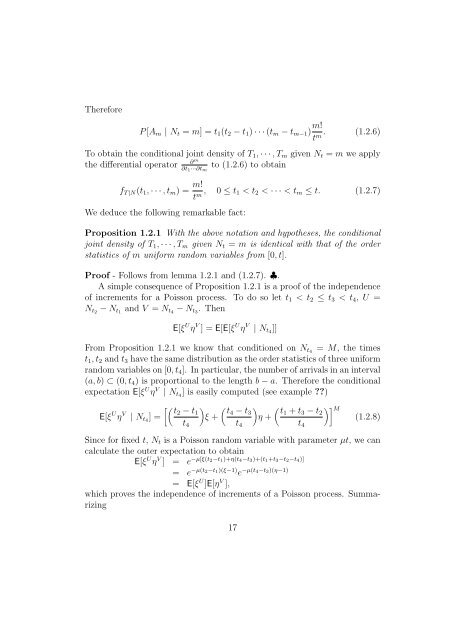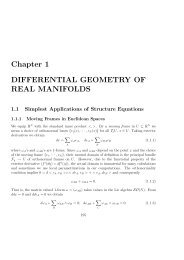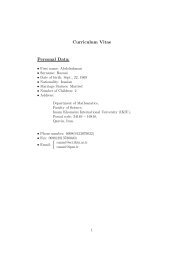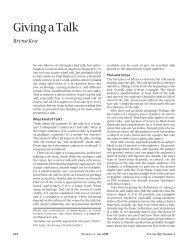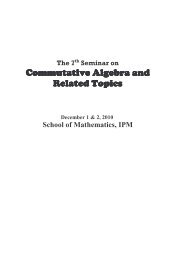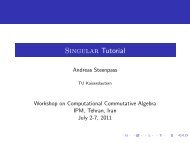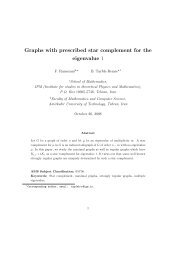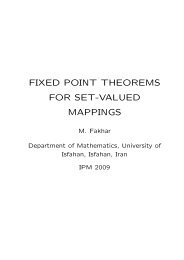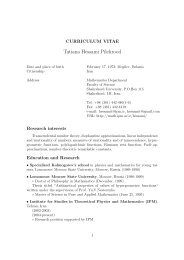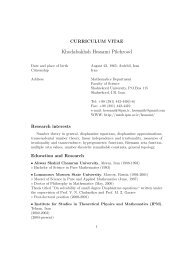1 Continuous Time Processes - IPM
1 Continuous Time Processes - IPM
1 Continuous Time Processes - IPM
You also want an ePaper? Increase the reach of your titles
YUMPU automatically turns print PDFs into web optimized ePapers that Google loves.
Therefore<br />
P [Am | Nt = m] = t1(t2 − t1) · · · (tm − tm−1) m!<br />
. (1.2.6)<br />
tm To obtain the conditional joint density of T1, · · · , Tm given Nt = m we apply<br />
the differential operator ∂m to (1.2.6) to obtain<br />
∂t1···∂tm<br />
fT |N(t1, · · · , tm) = m!<br />
t m , 0 ≤ t1 < t2 < · · · < tm ≤ t. (1.2.7)<br />
We deduce the following remarkable fact:<br />
Proposition 1.2.1 With the above notation and hypotheses, the conditional<br />
joint density of T1, · · · , Tm given Nt = m is identical with that of the order<br />
statistics of m uniform random variables from [0, t].<br />
Proof - Follows from lemma 1.2.1 and (1.2.7). ♣.<br />
A simple consequence of Proposition 1.2.1 is a proof of the independence<br />
of increments for a Poisson process. To do so let t1 < t2 ≤ t3 < t4, U =<br />
Nt2 − Nt1 and V = Nt4 − Nt3. Then<br />
E[ξ U η V ] = E[E[ξ U η V | Nt4]]<br />
From Proposition 1.2.1 we know that conditioned on Nt4 = M, the times<br />
t1, t2 and t3 have the same distribution as the order statistics of three uniform<br />
random variables on [0, t4]. In particular, the number of arrivals in an interval<br />
(a, b) ⊂ (0, t4) is proportional to the length b − a. Therefore the conditional<br />
expectation E[ξ U η V | Nt4] is easily computed (see example ??)<br />
E[ξ U η V | Nt4] =<br />
t2 − t1<br />
t4<br />
<br />
ξ +<br />
t4 − t3<br />
t4<br />
<br />
η +<br />
t1 + t3 − t2<br />
t4<br />
M<br />
(1.2.8)<br />
Since for fixed t, Nt is a Poisson random variable with parameter µt, we can<br />
calculate the outer expectation to obtain<br />
E[ξ U η V ] = e −µ[ξ(t2−t1)+η(t4−t3)+(t1+t3−t2−t4)]<br />
= e −µ(t2−t1)(ξ−1) e −µ(t4−t3)(η−1)<br />
= E[ξ U ]E[η V ],<br />
which proves the independence of increments of a Poisson process. Summarizing<br />
17


